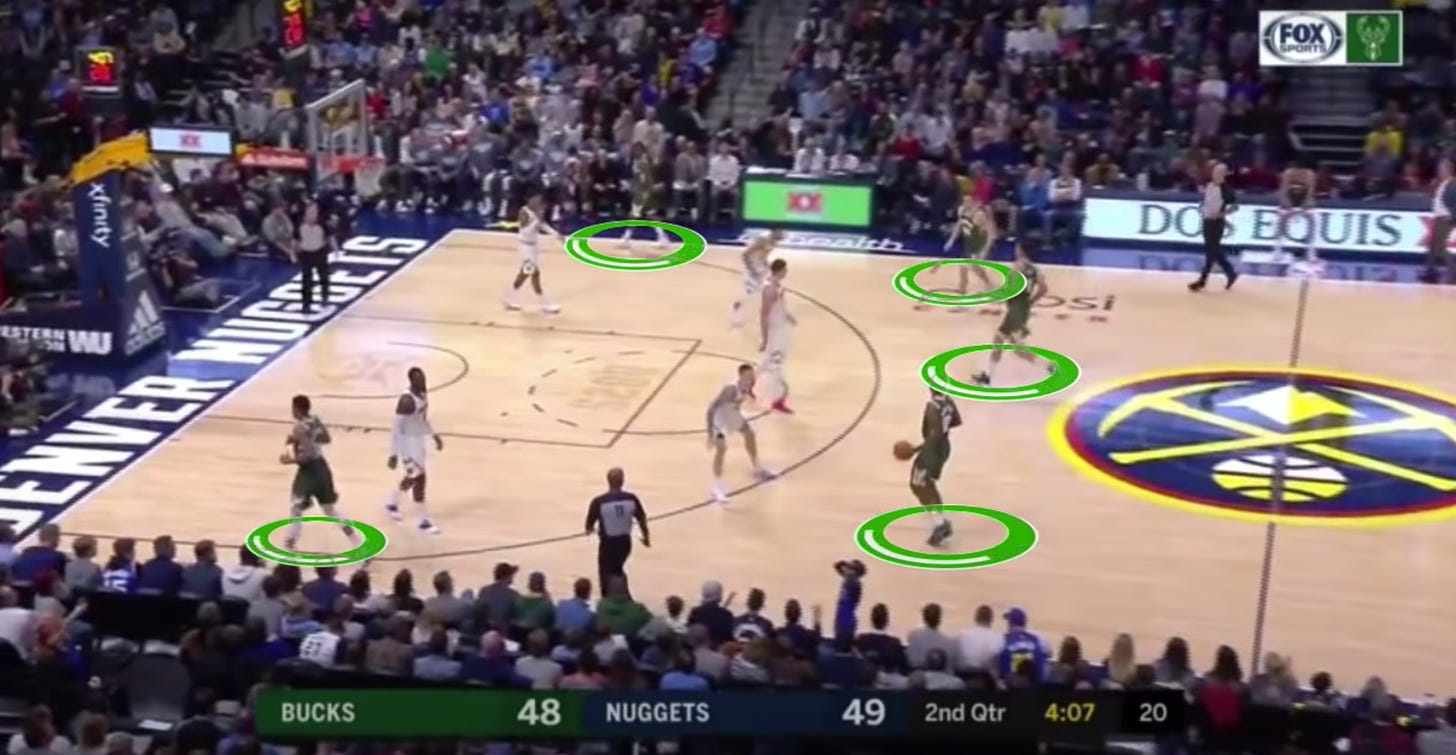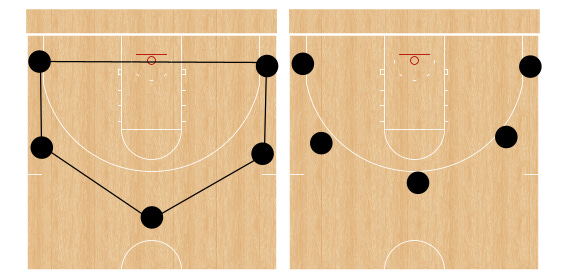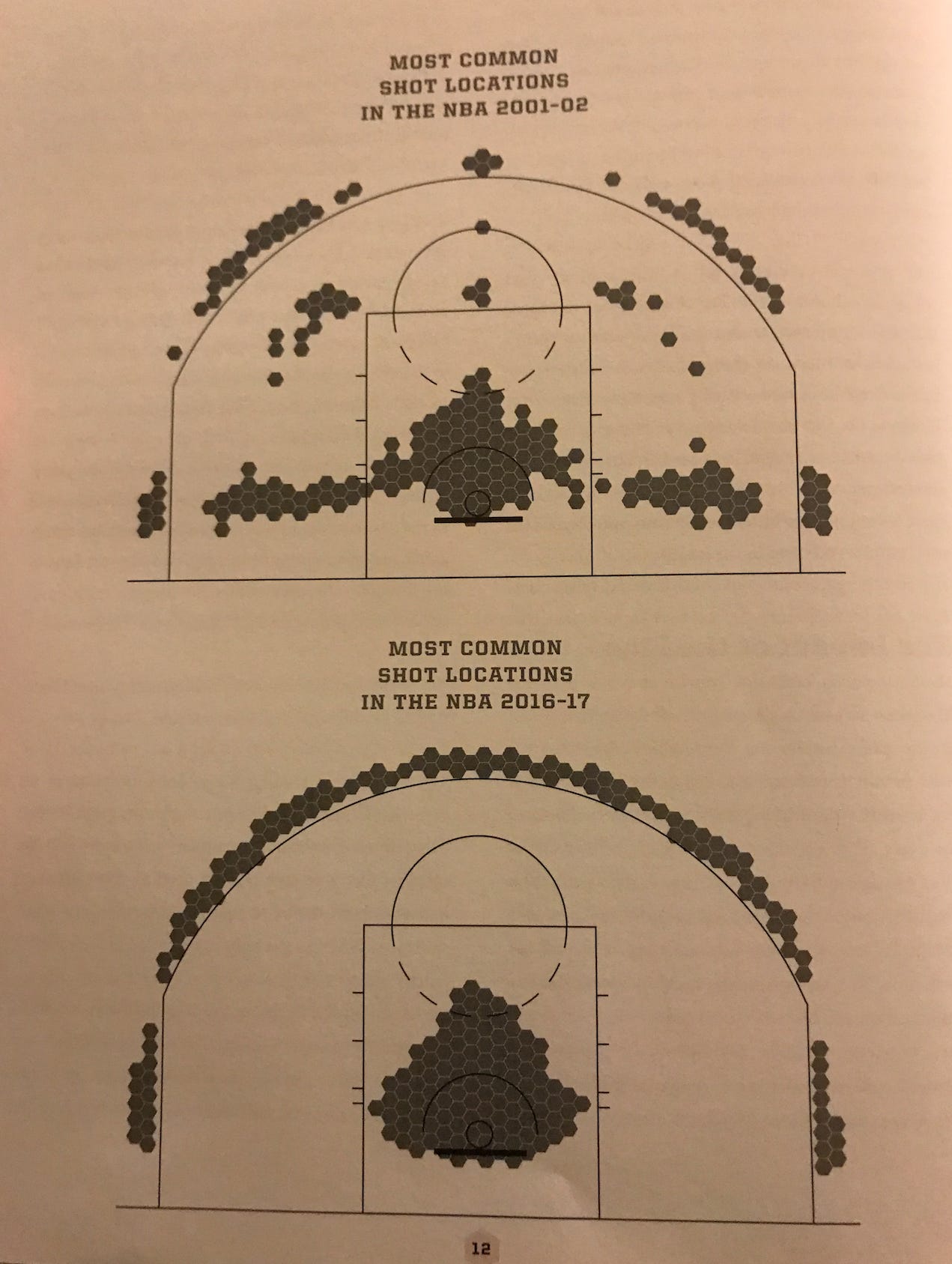I am often asked whether specific X’s and O’s from the NBA are applicable to lower levels of play. The rules and the skill level are different from other levels of play and that surely impacts the applicability.
If you hang around the sport long enough you’ll notice that things trickle down. College coaches study the NBA, high school coaches tend to study college coaches (who tend to study the NBA) so things NBA teams do will eventually make it into your level of play.
Whether specific offenses or sets from the NBA will “work” or not, there are some principles from The Association that you can apply. If you are interested in playing more like the pros, here are five tips.
Widen Your Positioning
The NBA has a much wider three-point line than lower levels of play. Since players tend to arrange themselves around this line, you see super wide positioning from NBA offenses.

NBA players are big so it all adjusts at scale. Athletes this large can’t afford to crowd. So if you stand closer to where they stand there’s even more space!
Stand wider and initiate your offense higher. Don’t crowd the line. If you are a five-out team, for example, create a “home plate” rather than a semi-circle.

Just because your level of play has a tighter three-point line doesn’t mean you have to stand on it!
Pick Up The Pace
NBA and FIBA teams must get into their offense right off the break. The sooner they can get into their first action, the deeper into their offense they can go if need be. There is no time to walk it up the court and arrange players without urgency.
Begin with this challenge. Get into your first action within four to five seconds of gaining possession.
Here’s an example of a non-NBA team doing just that (Michigan, coached by longtime NBA assistant coach and player Juwan Howard):
You may not have a 0:24 shot clock, or you may not have one at all! But you can still link together your transition offense and half court offense like the pros.
Clean Up Your Shot Selection
Analytics and data have a major impact on offense in the NBA. The geography of shot location has changed since the days of Wilt, Magic and MJ. This too is trickling down to levels below the NBA.

Consider this image above from Kirk Goldsberry’s book Sprawlball. The top image is from the pre-analytics age of 2001-02. You can see the 100 most common shot locations in that era. There is a smattering of three-point attempts, shots at the elbows and short corners.
Compare that to the image at the bottom from the 2016-17 NBA season. The NBA went and tidied up their shot selection!
Data tells us that the most efficient shots are taken at rim and beyond the three point line and NBA coaches (and many below that level) are designing offenses and adhering to concepts thusly.
Simply put, players are standing at different places on the court than they used to. You can do this too!
Shoot It or Move It
Perhaps related to the analytics movement, but also related to it being hard to guard, teams and players are using the advantage on the catch. Immediately. You can do this too!
Consider this example, a player drives to the basket, perhaps that drive was generated with a pick-and-pop. The driving player does not get home for a layup, but does collapse the defense. They kick out to player who is standing beyond the arc. The player on the receiving end of the drive-and-kick pass is shooting the ball if they have time and space. If not, they move it. This happens immediately with very few exceptions in the modern NBA. All but gone are ball-stopping players who allow the defense to reorganize.
This “shoot it or move it” mentality is at the heart of modern NBA offense. It is a mentality that can be a part of your offense as well.
Exploit The Mismatch
More and more defenses are switching all actions. This has become the norm at the NBA level and it too is trickling down.
What pros do that the lower levels seem to do less of is recognize and exploit the mismatches switching creates. They are ruthless about it.
When a big switches onto a guard in a ball screen, the guard goes to work on the big. Or the big pounds the little guy in the paint after a switch.
Coaches scheme ball screens and off-ball actions to get just who they want guarding their guy.
Do lower level defenders pay such a cost as consistently as NBA defenders do?
Will the “Horns” set you saw the Celtics run “work” at your level? Will the lane be as open as it is when Steph Curry and Klay Thompson are holding the corners (and there’s a defensive three seconds rule)? Maybe. Maybe not.
I challenge you to zoom out. What can we learn from the pro game at the conceptual level that we can apply? These five tips are things NBA teams are great at. They are qualities rather than specifics. Those qualities can be lived out by your team too!
Continue the conversation:
For help with implementation of these concepts and more, join our community for basketball coaches!
Enjoy all our basketball coaching resources.
Any questions, contact us! Happy to talk hoops any time day or night!
